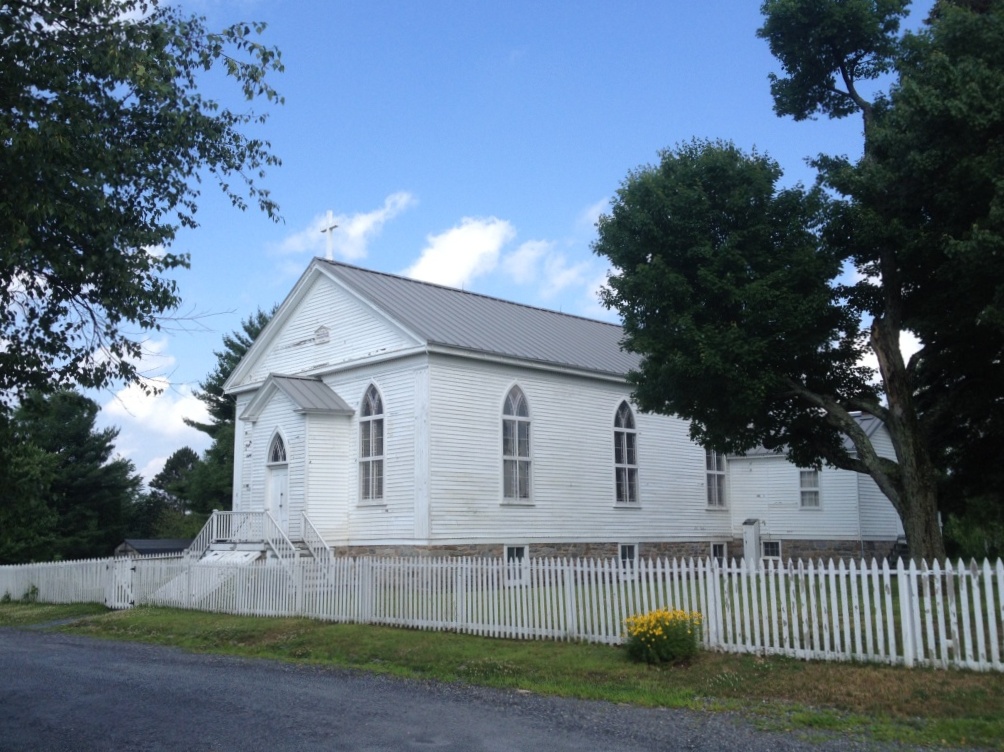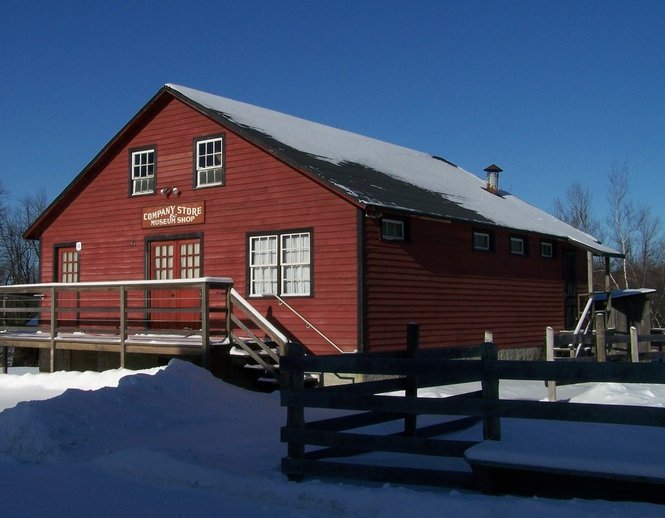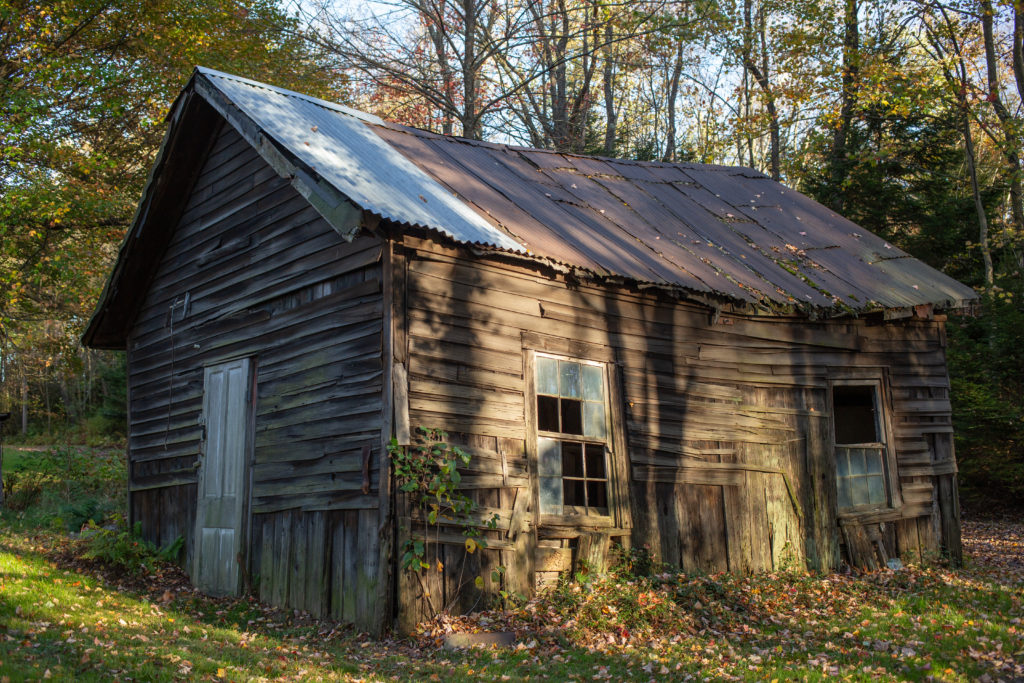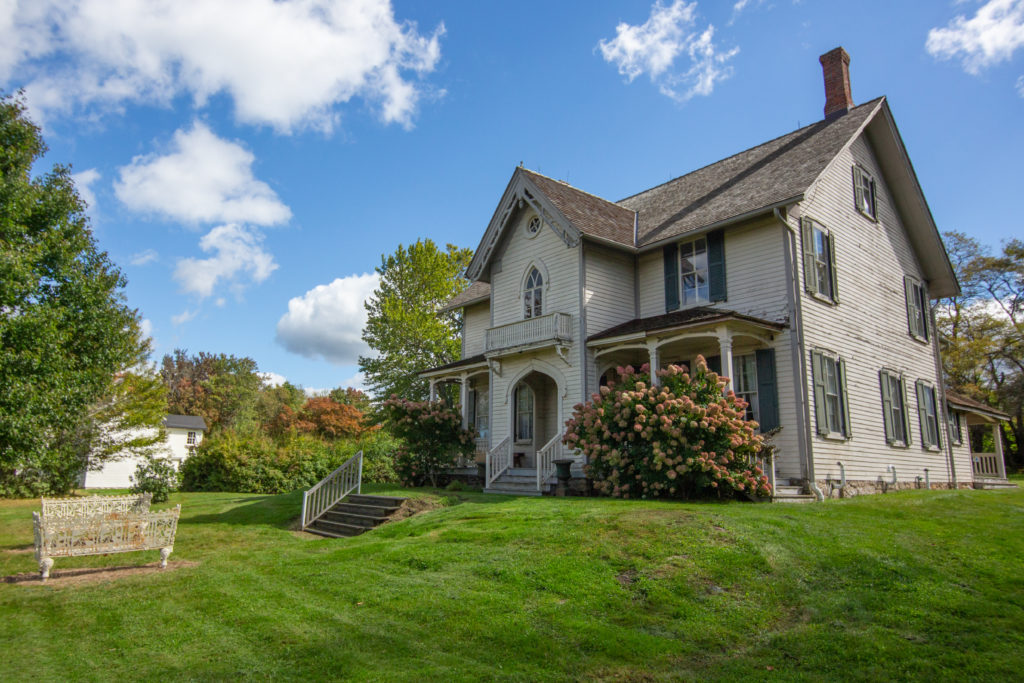The Village
Eckley is one among hundreds of company-owned mining towns or “patch towns” that cropped up across Northeastern Pennsylvania’s coal fields throughout the nineteenth century. Built cheaply and designed to enforce strict industrial discipline, company towns like Eckley speak to the almost unchecked power of the coal companies. But they also reflect the ways that working families challenged company control and carved out small areas of independence and opportunity in an otherwise unrelenting environment.
IMMACULATE CONCEPTION, 1861
Eckley’s Catholic church was constructed at the poorer, eastern end of town to serve the Irish parishioners who lived there in the 1850s and 1860s. Many of the middle and eastern European immigrants who arrived in the 1880s walked the three miles into Freeland to worship in their native languages at Orthodox churches.
Immaculate Conception Church was deconsecrated in 1950 and all items, excepting the original altar, were removed. Today, the interior is restored to its 1920s appearance with furnishings and icons from several nearby churches, especially Berwick’s Immaculate Conception Church.


LABORERS’ DWELLINGS, 1854
Construction on laborers’ dwellings began immediately upon the village’s founding in 1854. By 1860, the town included 130 houses. Families of common laborers lived in double homes and frequently took on boarders. Up to 30 people lived in each double home.
Built with savings in mind, the homes offered little more than shelter from the rain and lacked insulation, electricity, running water, and plumbing. Between 1930 and 1950, many of the dwellings were covered with Insulbrick, a faux-brick asphalt siding that provided a layer of insulation. Some Insulbrick is still visible in the village today.
COMPANY STORE, 1968
Eckley’s company store stands at the center of town and is a film prop from 1968’s Molly Maguires. The original store, demolished in 1940, was located near the commercial district at the western end of town.
Mining families relied on company stores for both mining equipment and domestic goods. Prices were often inflated by up to 15%, and miners were sometimes paid in scrip, or company credit, to keep them from taking their business elsewhere. Although the introduction of mail-order catalogues in 1906 reduced the company store’s monopoly, Eckley’s post office was also in the store, placing even mail orders under company control.


SLATE PICKERS’ HOUSE, 1854
Slate pickers’ homes are the village’s smallest and most meager dwellings. They consist of two downstairs rooms and an overhead sleeping loft, and their board and batten walls are been thin and drafty. Slate pickers or breaker boys worked in the breaker separating slate and other impurities from coal by hand. It was a dirty, dangerous position that was frequently filled by young boys and disabled miners.
Built quickly and cheaply, the original slate pickers’ homes have been lost to fire, strip mining, and time, though two reconstructions stand on Eckley’s Back Street.
SPORTS AND SOCIAL CLUB, 1946
In the 1940s, the mine owners leased land near the center of town to Eckley’s residents for recreation, and the social club was quickly erected. While the company store was the main social hub for the village’s women, the social club brought together Eckley’s male workers to celebrate and commiserate.
During the filming of The Molly Maguires, the social club served as the set for the Emerald House and can be seen in the movie’s bar scenes. The members-only club is still active today, and many residents of Eckley and nearby communities still participate in its events.


ST. JAMES EPISCOPAL CHURCH, 1859
St. James was consecrated as part of the Upper Lehigh Mission to serve the village’s English, Welsh, and German residents. It stands near the western end of town, where skilled miners, contractors, and mine bosses lived, and its decorative elements reflect the higher status of its congregants.
St. James fell into disrepair in the 1880s and was demolished in 1938. When Eckley opened as an historic site in 1974, it acquired St. Paul’s Episcopal Church from nearby White Haven. Built at the same time using the same designs, St. Paul’s now stands on the original foundations of Eckley’s Episcopal church.
DOCTOR’S OFFICE, 1874
Injuries were regular occurrences in company towns, and many, including Eckley, retained a doctor on site. Due to the nature of anthracite mining, company doctors developed particular expertise in treating respiratory conditions and performing amputations and other surgeries.
Paid by wages withheld from miners whether they needed medical attention or not, company doctors often became sources of contention during periods of unrest. Midwives, folk healers, and home remedies provided Eckley’s working families with medical care outside of company control.


BAND PRACTICE HOUSE, 1890
During leisure hours, company towns were entertainment hubs. Theatrical performances, feats of strength, competitive sports, and games of chance provided distractions from workaday hardships. At its peak, Eckley was home to four separate town bands that treated working families to parades and dances.
In 1890, Eckley’s owners built a practice building for the town’s cornet band. Although the structure speaks to the owners’ desire to keep workers happy, its poor construction suggests that mine owners felt less obligated to provide quality living conditions than they had when Eckley was founded.
SHARPE HOUSE, 1861
Home to one of Eckley’s founders, Richard Sharpe, the Sharpe House is the village’s largest and most ornate home. The Sharpe family resided on the first two floors, while the family’s servants occupied the attic.
Located at the extreme western end of town, the four mine owners’ homes would have been the first impression of Eckley on visitors from Hazleton. Across the street stood the village’s mule barns and fields, which – like the Sharpe House – was a symbol of the mine owners’ wealth.

